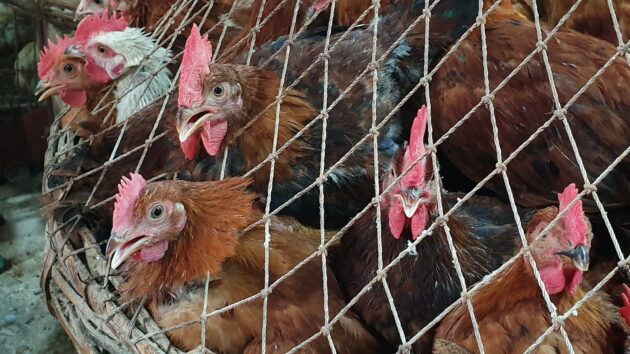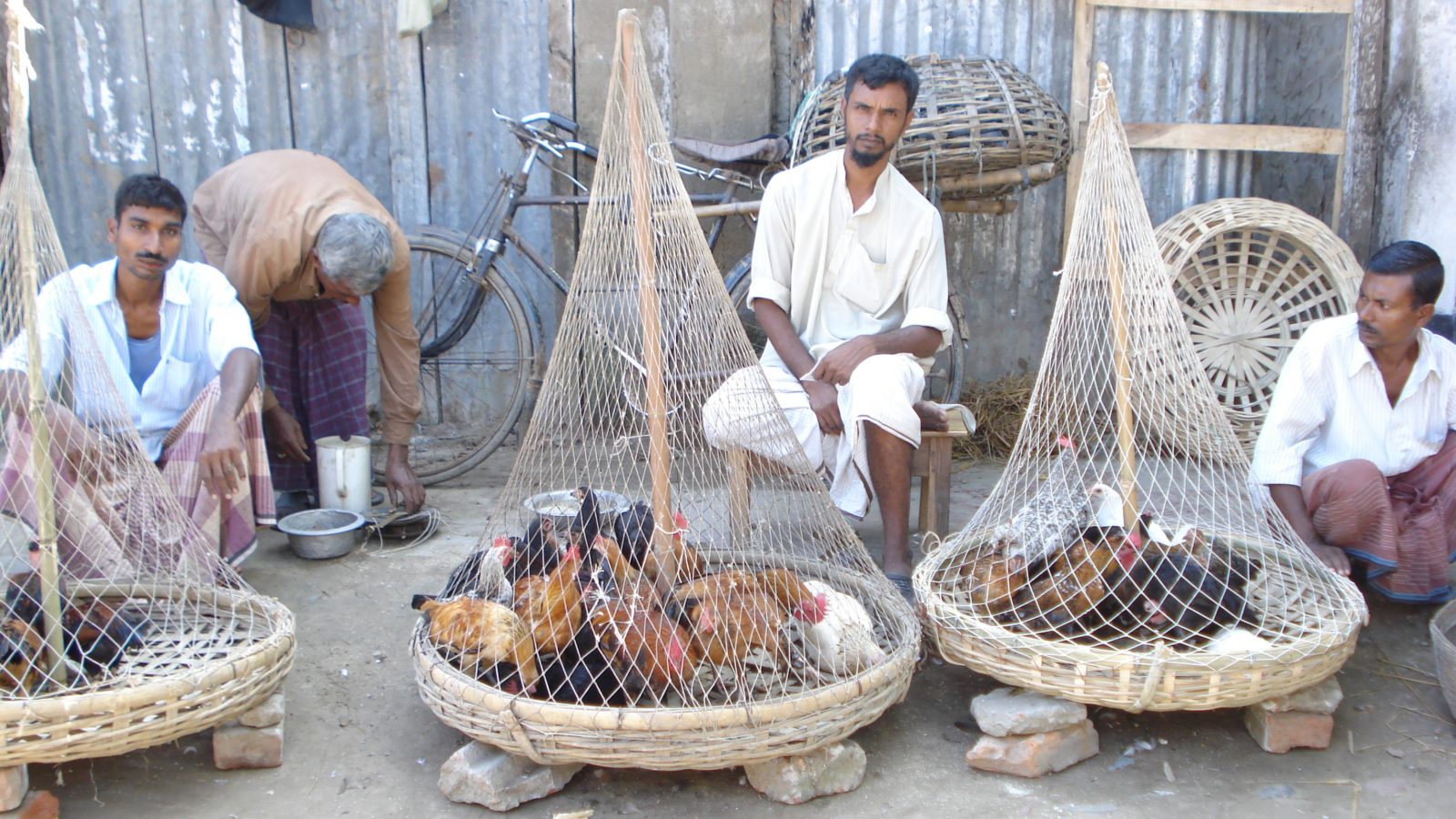
Md. Ahasanul Hoque
Epidemiologist
Chattogram Veterinary and Animal Sciences University
Farmers, traders and consumers in Bangladesh will be safer and livelihoods better protected thanks to strengthened public health measures. Informed by research findings, these measures will lower the risk of avian influenza spreading on farms and in live bird markets.
In Bangladesh, poultry production is the main livestock sector, with poultry farming expected to almost triple in size by 2050. But avian influenza (‘bird flu’) is a constant threat.
Avian influenza causes devastating losses on affected farms and therefore threatens farmers’ livelihoods. The disease in birds can also lead to local disease outbreak in people if the avian influenza virus jumps the species barrier from chicken to people. And, if the virus mutates into a new influenza viral strain transmissible between people, there remains the ever-present potential of a global pandemic.
Attempts to control avian influenza in Bangladesh have so far proved unsuccessful – one major reason being that measures have failed to address the everyday realities which determine the behaviour of the farmers and salespeople raising and trading chickens.
Prospects for more effective disease prevention and management have been significantly improved with the development of Bangladesh’s 3rd Avian and Pandemic Influenza Preparedness and Response Plan (NAPIP).
This document will guide policy and practice for the control of avian influenza in Bangladesh for the five-year period to 2026. Informed by findings from scientists in the GCRF One Health Poultry Hub, the plan will, for the first time, take into account the many factors determining why people make the decisions and act in the way they do.
These findings show that there are many significant factors that can influence the behaviour and decision making of the farmers, middlemen who buy birds and eggs at farm gates, market traders and others involved in the production and distribution of chickens in Bangladesh. They include a lack of financial capital, unfavourable credit systems, limited access to economic information and veterinary expertise, and fluctuating costs for feed, chicks and medicines.
Such factors mean that people in the chicken production and distribution networks must often make decisions based on short-term benefits rather longer-term goals. And that can discourage them from investing in better hygiene measures, such as foot baths, or push them to adopt risky trading practices, such as selling sick chickens.

Further, the research showed that the networks shaped by interactions between these actors differ between the particular poultry species and breeds, the people, the farming systems and the geographical areas involved.
By combining survey and interview data with epidemiological and genetic data, Poultry Hub scientists were able to identify how disease risks are generated along these networks, and where these risks are highest.
To feed the results into the policymaking process, Hub researchers facilitated roundtables and other policy dialogues at the highest level as the 3rd NAPIP was developed. As a result, national policy now recognises that top-down, information-based awareness raising campaigns have only limited success in fostering the lasting behaviour change needed to lower disease risk.
Instead, to promote healthier practices, the structural factors that constrain the behaviours of farmers, traders and other poultry stakeholders need to be addressed. One example of this understanding being put into practice is to promote the adoption of national biosecurity protocols by increasing farmers’ access to economic information and reliable credit systems.
The Hub, in collaboration with Bangladesh’s inter-ministerial One Health Secretariat and governmental agencies, will continue to take part in avian influenza prevention activities in Bangladesh, including monitoring and evaluating policies following implementation of the 3rd NAPIP. The development of behavioural-change strategies tailored to the Bangladeshi context has also now been identified as a key research priority to inform future disease prevention and control policy and practice.

Epidemiologist
Chattogram Veterinary and Animal Sciences University